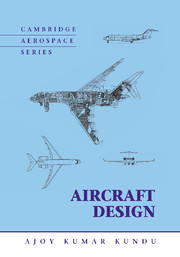Book contents
- Frontmatter
- Contents
- List of Symbols and Abbreviations
- Preface
- Road Map of the Book
- 1 Introduction
- 2 Methodology to Aircraft Design, Market Survey, and Airworthiness
- 3 Aerodynamic Considerations
- 4 Aircraft Classification, Statistics, and Choices for Configuration
- 5 Aircraft Load
- 6 Configuring Aircraft
- 7 Undercarriage
- 8 Aircraft Weight and Center of Gravity Estimation
- 9 Aircraft Drag
- 10 Aircraft Power Plant and Integration
- 11 Aircraft Sizing, Engine Matching, and Variant Derivative
- 12 Stability Considerations Affecting Aircraft Configuration
- 13 Aircraft Performance
- 14 Computational Fluid Dynamics
- 15 Miscellaneous Design Considerations
- 16 Aircraft Cost Considerations
- 17 Aircraft Manufacturing Considerations
- Appendix A Conversion
- Appendix B International Standard Atmosphere
- Appendix C Aerofoils
- Appendix D Case Studies
- Appendix E Tire Data
- References
- Index
4 - Aircraft Classification, Statistics, and Choices for Configuration
Published online by Cambridge University Press: 05 June 2012
- Frontmatter
- Contents
- List of Symbols and Abbreviations
- Preface
- Road Map of the Book
- 1 Introduction
- 2 Methodology to Aircraft Design, Market Survey, and Airworthiness
- 3 Aerodynamic Considerations
- 4 Aircraft Classification, Statistics, and Choices for Configuration
- 5 Aircraft Load
- 6 Configuring Aircraft
- 7 Undercarriage
- 8 Aircraft Weight and Center of Gravity Estimation
- 9 Aircraft Drag
- 10 Aircraft Power Plant and Integration
- 11 Aircraft Sizing, Engine Matching, and Variant Derivative
- 12 Stability Considerations Affecting Aircraft Configuration
- 13 Aircraft Performance
- 14 Computational Fluid Dynamics
- 15 Miscellaneous Design Considerations
- 16 Aircraft Cost Considerations
- 17 Aircraft Manufacturing Considerations
- Appendix A Conversion
- Appendix B International Standard Atmosphere
- Appendix C Aerofoils
- Appendix D Case Studies
- Appendix E Tire Data
- References
- Index
Summary
Overview
This chapter presents important information on aircraft configuration that is required in Chapter 6 coursework. The current design and configuration parameters from aircraft production and operations serve as a template for identifying considerations that could influence new designs with improvements.
During the last century, many aircraft configurations have appeared; today, most of those are not relevant to current practice. Older designs, no matter how good they were, cannot compete with today's designs. This book addresses only those well-established designs as shown in the recent Jane's All the World's Aircraft Manual; however, references are made to interesting and unique older aircraft configurations. The chapter starts by examining growth patterns in the aircraft operational envelope (e.g., speed-altitude capabilities). It continues with a classification of generic aircraft types that show distinct patterns within the class in order to narrow down the wide variety of choices available. Statistics is a powerful tool for establishing design trends, and some pertinent statistical parameters are provided herein.
This chapter compiles the available choices for aircraft-component configurations, including types of wing planform, fuselage shape, intake shapes and positioning, and empennage arrangements. These are the “building blocks” for shaping an aircraft, and as many configurations as possible are described. Artistic aesthetics are considered as long as they do not unduly penalize cost and performance – everyone appreciates the attractive streamline aircraft shapes. The new Boeing 787 Dream liner (see Figure 1.8) shape is a good example of the company's latest subsonic commercial transport aircraft.
- Type
- Chapter
- Information
- Aircraft Design , pp. 98 - 137Publisher: Cambridge University PressPrint publication year: 2010

